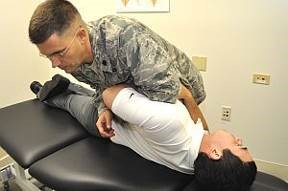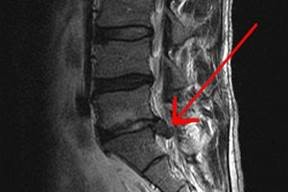Which Sports Pose the Greatest Risk of Back and Neck Injuries?
 Participating in sports is fun. Sports provide healthy exercise, comradeship, a sense of competition, and the opportunity to build and improve athletic skills. However, all sports also involve some risk of injury. In 2006, the National Electronic Injury Surveillance System reported over half a million injuries, and that figure is only for basketball. The same agency recorded another two million sports injuries associated with bicycling, football, and other sports. And it’s not just adults who risk injury—the National SAFE KIDS Campaign and the American Academy of Pediatrics report that 3.5 million kids age 14 and younger are injured every year playing sports.
Participating in sports is fun. Sports provide healthy exercise, comradeship, a sense of competition, and the opportunity to build and improve athletic skills. However, all sports also involve some risk of injury. In 2006, the National Electronic Injury Surveillance System reported over half a million injuries, and that figure is only for basketball. The same agency recorded another two million sports injuries associated with bicycling, football, and other sports. And it’s not just adults who risk injury—the National SAFE KIDS Campaign and the American Academy of Pediatrics report that 3.5 million kids age 14 and younger are injured every year playing sports.
It’s important to keep numbers like these in perspective. The truth is that most of these injuries are relatively minor. “Pulled muscles,” meaning muscles and tendons damaged as the result of not warming up and stretching properly, are probably the most common type of injury, but they are not consistently reported to doctors, so no accurate statistics exist on their prevalence. The most prevalent sports-related injuries reported—in order from most common to least—are runner’s knee (55%), shoulder injuries (20%) sprained ankles (15%), and tennis or golf elbow (7%).
Serious Injuries
Next in line come a number of potentially more serious injuries involving the neck, back and spinal cord. These injuries often fit the description of “catastrophic” injuries used by sports physicians, and their number is sadly on the rise. To provide more information for sports enthusiasts hoping to minimize their likelihood of injury (not to mention parents worried about their children becoming injured), we’ve identified a few sports that cause the most neck, back and spinal cord injuries.
Sports that Cause Injuries
Naturally, any kind of “contact sport” (like football, ice hockey, and rugby) involves a higher risk of injury to the muscles, tendons, joints, and bones of the neck and back. Any time a body moving at several miles an hour runs into another one, the laws of physics dictate that there is a certain likelihood of damage, and that the damage may be serious. Even when wearing proper protective equipment (including helmets and pads), there is always a possibility of injury involved in playing these sports.
Interestingly, however, neck strain and injuries are prevalent even among practitioners of non-contact sports. For example, tennis players often put stress on their necks while straining upwards to hit overhead smashes. And cyclists who use racing handlebars and bend low over them put severe repetitive strain on their necks, because they literally have to tilt their head up into an over-extended position to see where they’re going.
Any sport (or strength-training exercise to prepare for participating in a sport) that involves lifting weights increases your risk of injuring your back and spinal cord. Most weight-lifting-related injuries are caused by either not warming up properly, by attempting to lift too much weight, or both. These types of injuries are common not only among weightlifters, but also among martial artists, tennis players and golfers, because these athletes tend to rotate their spines only in one direction. Skiers and swimmers also have a greater number of lower back injuries than other athletes. Even running can cause chronic back pain, because running improperly or with the wrong type of footwear can cause arch pain or Achilles tendonitis, which then throws the athlete’s posture off and can put strain on the back and neck even when they are no longer running.
Which Sport is the “Safest”?
So the “bottom line” is that no sport is entirely “safe” in the sense that it is completely free from the possibility of injury. There have even been cases of people spraining their thumbs from playing tiddley-winks. But if you practice “safe sports” by always warming up and stretching properly, wearing the proper equipment, knowing your limits and not exceeding them, you can avoid many potential injuries.
Contact Us at Southeastern Healthcare Today!
If you become injured—or even if you just want advice about how to avoid injury—your chiropractor can be a very valuable resource. Many chiropractors specialize in the field of sports medicine. They can measure your gait while walking or running, or watch how your body moves when performing the movements required by a certain sport, and offer advice on both how to make your movements more efficient and how to avoid injury while making them. Call or visit our office to learn more!

 Lower back pain (LBP) is so widespread that it was listed in the 2010 Global Burden of Disease report as being the single leading cause of disability worldwide. Over half of all working Americans have lower back pain symptoms each year, resulting in lost work time and enormous expense – Americans spend over $50 billion each year to treat their back pain.
Lower back pain (LBP) is so widespread that it was listed in the 2010 Global Burden of Disease report as being the single leading cause of disability worldwide. Over half of all working Americans have lower back pain symptoms each year, resulting in lost work time and enormous expense – Americans spend over $50 billion each year to treat their back pain. Unless you’re either very, very young or live on a remote desert island without TV, radio, Internet or print media, you’ve probably heard the term “core strength” before. Serious athletes and exercise enthusiasts talk about it at the fitness center, and so do their coaches and trainers. But did you know that chiropractors and physical therapists talk about it too? So what exactly is core strength and why do some kinds of healthcare professionals care about it so much?
Unless you’re either very, very young or live on a remote desert island without TV, radio, Internet or print media, you’ve probably heard the term “core strength” before. Serious athletes and exercise enthusiasts talk about it at the fitness center, and so do their coaches and trainers. But did you know that chiropractors and physical therapists talk about it too? So what exactly is core strength and why do some kinds of healthcare professionals care about it so much? As anyone who has a long commute to work or drives for a living can tell you, driving can take a toll on your body, especially your back!
As anyone who has a long commute to work or drives for a living can tell you, driving can take a toll on your body, especially your back!
 One of the most common causes of lower back pain occurs when the spinal disks in the lumbar area become herniated. A herniated disk happens when the bone of the disk itself has crumbled or fractured and the soft inner core bulges out through the outer portion of the disk. This places pressure on the spinal nerve root that runs through the disks, and the result can be pain in the lower back as well as numbness, tingling, or weakness in the legs and buttocks. Medical doctors tend to treat acutely herniated disks with oral steroids and epidural injections of cortisone, both of which have limited success rates and adverse side effects.
One of the most common causes of lower back pain occurs when the spinal disks in the lumbar area become herniated. A herniated disk happens when the bone of the disk itself has crumbled or fractured and the soft inner core bulges out through the outer portion of the disk. This places pressure on the spinal nerve root that runs through the disks, and the result can be pain in the lower back as well as numbness, tingling, or weakness in the legs and buttocks. Medical doctors tend to treat acutely herniated disks with oral steroids and epidural injections of cortisone, both of which have limited success rates and adverse side effects.